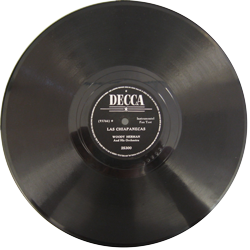In the beginning was the 78. Anyone know what 78 was?
It was commonly called a record, but not the kind of record you find in a database, and not “to record” as in to write down.

Nope, a record was a vinyl disk for playing music. The 78 referred to the RPM, rotations per minute, or how fast the disk spun. 78 was pretty fast and the sound quality was okay, but the disk was large and it didn’t take long before you had to flip the disk over. So the 33 1/3 RPM disk format came out.
The 33 1/3 record became the standard music format for decades. A smaller size disk was played at 45 rpm. It was called a “single” because it had time enough for only one song.
In the early 1960s, Phillips invented the compact audio cassette, which took off in the 1970s as a format for portable music. The music cassette could store up to 120 minutes of music, and cassette players found their way into cars and portable music gizmos like the Sony Walkman. But the sound quality was atrocious, most notably the “hiss” noise made by the tape crossing the read/record head on the cassette player.
The 1970s saw the dawn of the digital age with the introduction of the compact disc, or CD.
In the early 1990s, data CDs became common for PCs and eventually PCs could burn their own CD data and music discs.
The CD was followed by the DVD, which had the same size and look, but could store much more information, particularly videos.
DVD is followed by the Sony Blu-Ray format, though I don’t think Blu-Ray will take over the world. That’s because spinning disks are archaic. The future does not spin, it’s all digital. Solid state.
I’ve already written that hard disk drives are soon to be a thing of the past, replaced by the SSD, solid state drive. That’s the direction I predict for the CD/DVD format as well. The problem right now is simply finding a useful, long-lasting format.
To replace the CD/DVD, you need something that’s of a comparable size, but perhaps not as large. I think something credit-card sized would be good, perhaps the same size as a PC card. Its capacity can vary, so that you can sell something with only 1GB storage for music, but much more for a video or data storage. That way the same slot on a PC or in a car could accommodate whatever was stored on the media.
A step in the right direction is something called SlotMusic, developed by SanDisk and some major music makers. But I want to see more, a format not only for music but for videos, film, and removable data storage. It make take some time to get there, but it’s coming.


You omitted the miniDisc player/recorder. I found one at the Big W a few months ago. I can’t get new blank disks for it, nobody makes media in miniDisc form anymore and the recorder/player came with a single disk which apparently can be rewritten.
I like CDs. Until online companies such as Apple’s realize that until they provide true fidelity (i.e. 320kps bit rate) it will not replace older forms.
Comment by richie — October 26, 2008 @ 7:10 pm
Do you mean the miniDisc that plays smaller CDs? Or the digital disc format that was popular a few years back with audio professionals, but never really caught on with the public?
Comment by admin — October 26, 2008 @ 7:23 pm